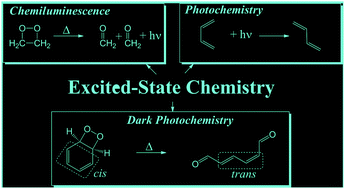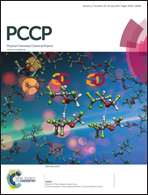Theoretical study of the dark photochemistry of 1,3-butadiene via the chemiexcitation of Dewar dioxetane†
Abstract
Excited-state chemistry is usually ascribed to photo-induced processes, such as fluorescence, phosphorescence, and photochemistry, or to bio- and chemiluminescence, in which light emission originates from a chemical reaction. A third class of excited-state chemistry is, however, possible. It corresponds to the photochemical phenomena produced by chemienergizing certain chemical groups without light – chemiexcitation. By studying Dewar dioxetane, which can be viewed as the combination of 1,2-dioxetane and 1,3-butadiene, we show here how the photo-isomerization channel of 1,3-butadiene can be reached at a later stage after the thermal decomposition of the dioxetane moiety. Multi-reference multiconfigurational quantum chemistry methods and accurate reaction-path computational strategies were used to determine the reaction coordinate of three successive processes: decomposition of the dioxetane moiety, non-adiabatic energy transfer from the ground to the excited state, and finally non-radiative decay of the 1,3-butadiene group. With the present study, we open a new area of research within computational photochemistry to study chemically-induced excited-state chemistry that is difficult to tackle experimentally due to the short-lived character of the species involved in the process. The findings shall be of relevance to unveil “dark” photochemistry mechanisms, which might operate in biological systems under conditions of lack of light. These mechanisms might allow reactions that are typical of photo-induced phenomena.


 Please wait while we load your content...
Please wait while we load your content...